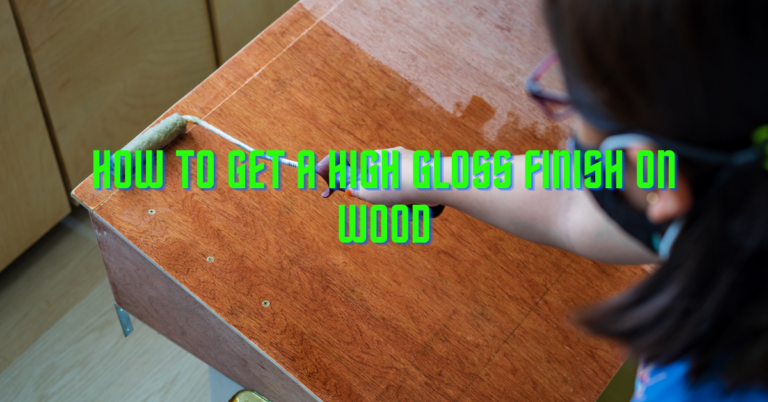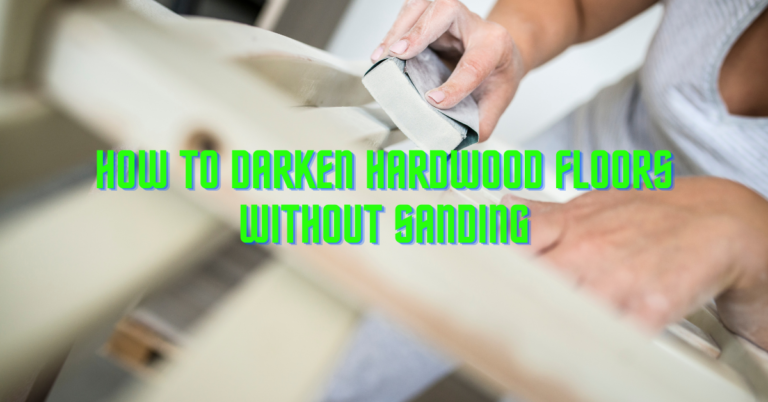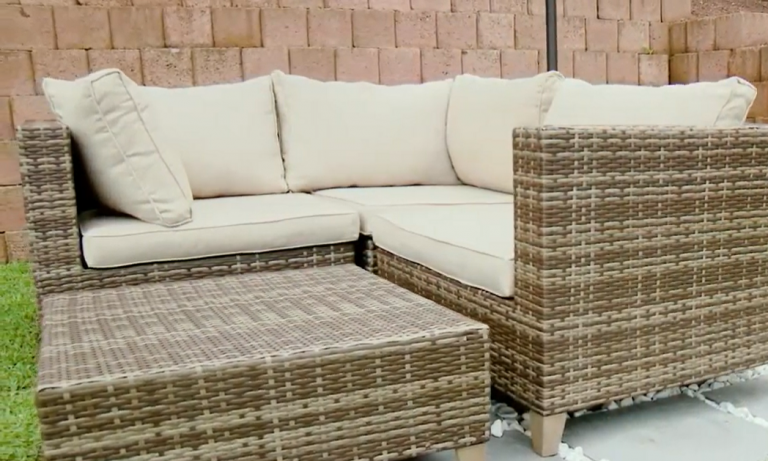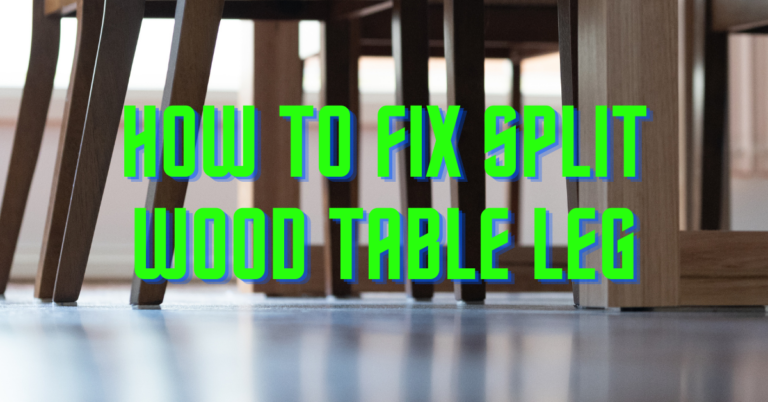How To Draw Moisture Out of Wood Floors
Wooden floors are a beauty. Not only does it add beauty and style to the home, but it is durable as long as you properly maintain it. As durable as it can be, it is not susceptible to water damage because of its porous nature. This can affect the wood’s appearance and cause it to buckle and knowing how to draw moisture out of wood floors is a good decision
Water is wood’s enemy. Regardless of how sealed or waxed the wood floor is, it won’t prevent water from getting into the flooring. Sealants and wax can only provide a certain degree of waterproofing to prevent the floor from being completely damaged.
Drying the wood floors fast is paramount to reducing the extent of the damage. This article contains steps on how to draw moisture out of wood floors.

All at a Glance
Drying Wet Wood Floors
As pointed out earlier, getting your wet wood floor dried quickly will reduce the degree of damage. Wood contains cellulose fibers that absorb water quickly. Wood floors have several penetration points. So, if you think water can’t get into the wood, you are mistaken.
The quicker you dry the water, the better for you and the floor. One question many would want to ask is, “how do I know if there’s moisture damage?”
Some signs indicate your wood may be affected by water. These signs vary according to the type of wooden floor. Common signs are warping (sometimes called cupping), discoloration/staining, buckling, swelling, and bulging.
Stains, cupping, buckling, and bulging are common signs of water damage on hardwood floors. Stains may indicate the presence of mold. Cupping is identified by dips and raised edges while buckling means a collapsed plank. If the floor forms an upward bubble, then it’s bulging.
Now that you know the signs of water damage, let’s jump on the steps to remove water from wood floors.
Steps and Materials Needed
Materials required:
- Rubber gloves
- Bucket
- Mop
- Wood cleaner
- Dehumidifier
- Fans
- Scrub brush
- Wet vacuum
- Disinfectant
Steps
Step 1: Remove All Furniture and Coverings
If you have any covering like carpet, mat, or rug on your wet wood flooring, you must take them off immediately. If you have any furniture on the floor, you should also take them away.
Rugs and other wet coverings will shed more moisture into the wood. Wet furniture can cause mildew growth, which will penetrate the pores of the flooring. Take all wet items to an area where they can dry properly. Alternatively, you can set them out in the sun.
Step 2: Dry Out Water with a Mop
Soak up visible spills on the floor with a mop or clean rag. If the water is deep inside the wood, mops, and rags will be insufficient. A water pump, such as a wet vacuum, will suction water until there’s none.
Once full, empty the vac to prevent accidental seeps and maintain the suction’s power. Wet vac can still siphon the water from wood pores. So, keep pumping until you are sure there’s no moisture lurking in the seams.
Step 3: Scrub the Wood Surface with a Floor Brush and Disinfectant
Because you siphoned the water from the pores doesn’t mean that the wood floor is clean. There’s a high possibility of mud and debris in the corners. These can trap water and potential bacteria that can be dangerous to the wood. So, scrub them off.
With a non-abrasive brush dipped inside a detergent and water, clean the floors thoroughly. Scrub until all the debris and dirt are completely exterminated. Suck up the water with a vac to dry the area.
Use a wood floor cleaner to scrub the floor again to ensure that all the substances are completely removed. Rinse with water and suction with a wet vac. Clean the surface with a dry cloth.
Step 4: Remove Some Wooden Boards to Allow the Floor Dry Quicker
Wet wood floors swell and eventually expand. Removing a few of them will allow the others to dry faster and enable them to increase without cracking. If this isn’t possible, skip this step and jump to step 5.
Step 5: Dry the Floors with Fans
Place fans around the room and adjust the setting to the highest to promote circulation. We recommend using large industrial fans to do this as they will achieve faster drying than small fans. Use as many fans as possible, pointing them to the damaged areas.
Also, open up windows to allow more air. Avoid this if the air outside is humid or it is raining. Leave the fan running for a minimum of 24 hours.
Step 6: Check for Mold
Mold is a health hazard. People can experience allergic reactions and breathing issues when they come in contact with mold. Therefore, you must inspect for mold on the floors.
If you notice any sign of mold on the wood floor, scrub it with an abrasive cleaner. Alternatively, you can use a TSP-water solution with the addition of bleach to clean the floor. We advise you to avoid using baking soda to clean because it will affect the wood finish.
After cleaning, vacuum the moisture and activate the fans. If the water has penetrated the planks, a wet vacuum and ordinary fans would be insufficient. Move to the next step.
Step 7: Use Dehumidifiers for Enhanced Drying
Dehumidifiers have a better drying and suction ability than fans. They remove moisture in the air and come in two forms – home and commercial dehumidifiers. The latter is commonly used for severe flooding as they are four times more potent than home dehumidifiers.
For better results with a dehumidifier, close all exits (windows and doors) and keep it on. Put it in the center of the enclosed space at the highest setting and leave it on for a minimum of 24 hours.
You can still set fans around the room. After a while, open the windows to allow more air. However, don’t do this in humid conditions.
Step 8: Check for Moisture Content
There’s a high possibility of moisture remaining on the wood floors. It takes weeks to months for wood floors to completely dry, depending on the humidity and amount of water in the wood. So, don’t be astonished if you discover moisture in the wood.
To know if the wood is dry, use a moisture testing meter to inspect. If the water content is over 5%, the wood isn’t dry yet. All you need to do is leave the fans and dehumidifier running until the meter shows the absence of water in the wood.
Once fully dry, re-cover the floor with carpet or rugs and put your furniture back in place.
Also Reads: Top 6 Best sander for removing paint from wood
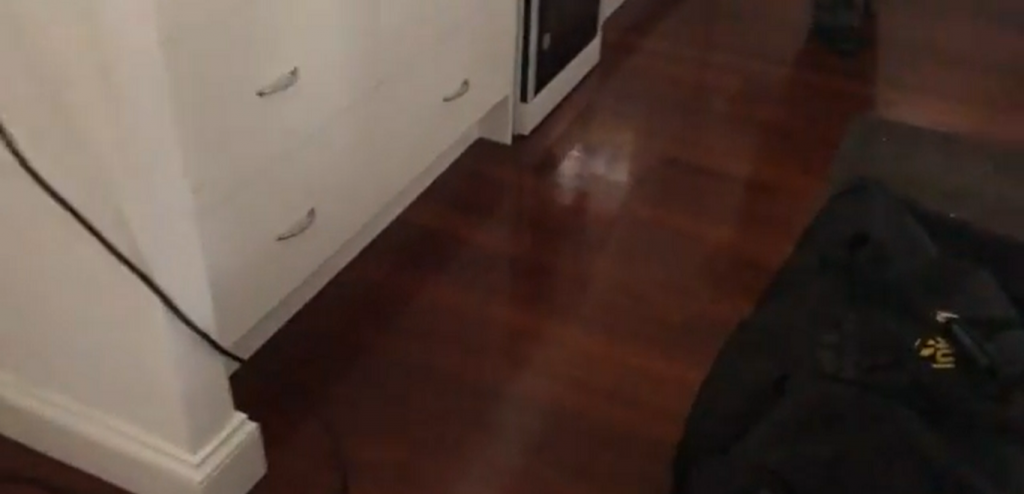
Frequently Ask Question on How To Draw Moisture Out of Wood Floors
- What draws moisture out of wood?
Dehumidifiers and fans can extract moisture out of wood. They are usually combined to dry the wood faster.
Set the dehumidifier in the center of the area after the water has been scrubbed off. Turn the dehumidifier to the highest level and leave it to run for a day. Switch the fans on to blow the surface.
- How do you soak moisture out of the floor?
You can do that with a mop, turning on the AC system, running a shop vac, or soaking the water with a dehumidifier. Materials like aluminum foil and sandwich wrap don’t absorb moisture and shouldn’t be used to soak up water.
- Does baking soda damage wood?
Baking soda is a cleaning agent famous for its ability to absorb odors. It can be used to clean wood floors, but the abrasiveness can negatively impact the wood finishes. Use dish soap and water instead to clean wood surfaces.
- Can wet hardwood floors be saved?
Yes. Wet hardwood floors can be saved if you soak up the water quickly. The best thing to use here is the dehumidifier. It can evaporate the water quicker. Sometimes, you will have to sand the wood to give it a better look.
Conclusion: How To Draw Moisture Out of Wood Floors
Drawing moisture out of wood floors is not complicated. Water seeps into all types of wood flooring. It doesn’t matter how sealed or well-finished the floor is. As soon as the water gets into the wood, remove it immediately using the above steps.
The sooner you do this, the better the chances of elongating the wood’s lifespan and the faster the drying. That will save you the trouble and costs of replacing the section of the floor or the entire floor.
It will take several weeks for the wood to dry, but it’s nothing to fret about. Once completely dried, the wood will return to its original state. It’s also crucial to perform periodic cleaning on the wood to keep the floor shiny and enable it to last longer.
Important Reads:


